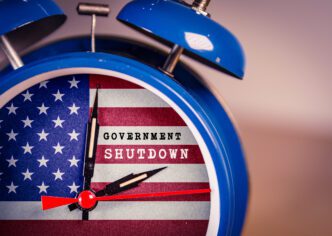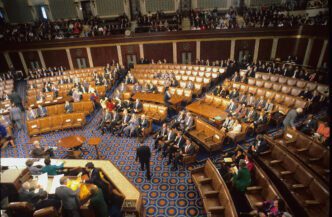Executive Summary
The Story So Far
Why This Matters
Who Thinks What?
The ongoing U.S. government shutdown, which commenced on October 1 and has now lasted 36 days, has become the longest in American history and is projected to be the most economically damaging to date. Economists from institutions like Goldman Sachs and the Congressional Budget Office estimate a significant, albeit temporary, blow to the world’s largest economy, impacting federal employees, food stamp recipients, and the availability of crucial economic data.
Economic Impact Intensifies
Historically, the economic damage from government shutdowns has been fleeting, often reversing quickly once operations resume. However, the current 36-day lapse in funding is already inflicting a substantial, though temporary, blow to the nation’s economy.
Goldman Sachs’ chief political economist, Alec Phillips, highlighted that this shutdown is likely to have the “greatest economic impact of any shutdown on record.” The firm projects a 1.15 percentage point slowdown in real gross domestic product (GDP) growth for the fourth quarter.
The nonpartisan Congressional Budget Office (CBO) also estimates that the shutdown will reduce GDP by one to two percentage points. While most of this decline is expected to be recovered, the CBO predicts between $7 billion and $14 billion in permanent economic losses.
Broader Scope of Current Shutdown
This shutdown is notably broader than previous ones, particularly when compared to the 2018-2019 shutdown, which was previously the longest at 35 days. That earlier event was a partial shutdown, affecting only 10% of government spending, according to Goldman Sachs.
In contrast, the 2025 shutdown has disrupted 100% of appropriations. David Kelly, chief global strategist at JPMorgan Asset Management, noted that the timing is particularly poor, as the economy was already expected to slow due to factors like high tariffs, low immigration, and the resumption of student loan payments.
Information Blackout Hampers Decisions
The precise economic damage from the shutdown is difficult to ascertain due to an information blackout caused by the funding lapse itself. Only one major economic report, the September consumer price index (CPI), has been released by the federal government during this period.
Key data releases, including the monthly jobs report, the Federal Reserve’s preferred inflation metric, and insights into consumer spending, have been sidelined. This lack of information has forced policymakers, including the Federal Reserve, to make decisions with limited visibility.
Federal Reserve Chair Jerome Powell indicated that if the shutdown continues to obscure economic data, it could lead the central bank to delay interest rate decisions. He stated during a recent press conference, “What do you do if you’re driving in the fog? You slow down.”
Uncertainty Over Rebound
While much of the shutdown’s economic damage is anticipated to reverse once the government reopens, boosting first-quarter GDP growth by an estimated 1.3 percentage points, these forecasts depend on federal workers receiving back pay.
However, President Trump has publicly questioned the policy of compensating furloughed workers. The White House recently declined to commit to paying furloughed workers at the shutdown’s conclusion, introducing a significant risk of more lasting economic damage.








